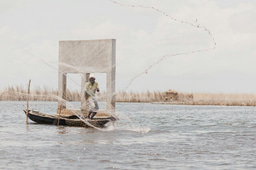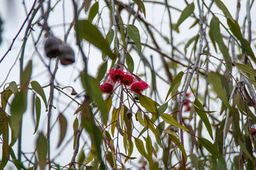
A Journey Through Zambia’s Untamed Heritage
There is a quiet wisdom in the rustle of miombo woodlands, a deep knowing in the stare of a sable antelope, and a story written in every pawprint etched into the dust trails of Zambia’s wild spaces. For those of us who have walked the forests, planted trees with trembling hands, or stood in awe before a flock of crowned cranes rising in unison, the wild is more than a landscape it is legacy. It is identity. Yet, as Zambia’s ecosystems breathe under the weight of climate change, habitat degradation, and human wildlife conflict, the urgency to protect our natural heritage grows louder. My journey from the youthful energy of tree planting campaigns to witnessing conservation at sanctuaries like Chembe has shown me that the wild is not just something to be observed. It is something to be defended, restored, and deeply understood.
The Role of Youth and Community in Wildlife Conservation
In Zambia, wildlife conservation has historically been viewed as the domain of rangers, government institutions, and international NGOs. However, this narrative is shifting, especially with the emergence of youth led and community-based conservation efforts. As a young environmentalist and a member of the Mukuba University Climate Change Action Society (MUCCAS), I have witnessed how mobilizing young minds can breathe new life into dormant landscapes.
Youth involvement, especially at the grassroots level, is proving to be a transformative force. During my time with the Healthy Environmentally Friendly Youth (HEY) Campaign, I saw how education and activism could empower young people to become defenders of biodiversity in their own villages. This is crucial because communities living near protected areas often experience both the beauty and the burden of wildlife, particularly in areas where elephants, hippos, and even leopards roam close to human settlements. The inclusion of youth voices in conservation dialogues ensures not only future leadership but also immediate innovation and energy that traditional structures sometimes lack (UNEP, 2022).
Zambia’s Ecosystems Under Threat What We Stand to Lose
Zambia is home to a diverse array of wildlife species and ecosystems, from the wetlands of Bangweulu to the dry forests of Luapula and the grasslands of Kafue. Yet, these ecosystems face unprecedented pressure. According to the Zambia Environmental Management Agency (ZEMA, 2023), over 250,000 hectares of forest are lost annually due to charcoal production, illegal logging, and unsustainable land conversion. This not only disrupts the balance of local ecosystems but also endangers the habitats of species such as the African wild dog (Lycaon pictus) and the black lechwe (Kobus leche smithemani), which are already classified as vulnerable or endangered (IUCN, 2024).
Moreover, climate change has intensified the frequency of droughts and floods in recent years, altering migratory routes and food availability for wildlife. In Chembe Bird Sanctuary, for instance, anecdotal observations have shown a decline in certain migratory birds whose wetland habitats are shrinking or becoming polluted due to nearby agricultural runoff. The risks are no longer distant or theoretical; they are visibly unfolding before our eyes.
Hope Through Action
What We’re Doing and Why It Matters
Despite these challenges, hope persists in the form of local and youth led initiatives. I have participated in campaigns that combined education, advocacy, and reforestation, often under resource constrained but determined conditions. Tree planting, while sometimes dismissed as symbolic, can have measurable ecological benefits when integrated with long-term monitoring and local stewardship. In collaboration with institutions such as the Zambian Climate Change Network and the Pan African Climate Justice Alliance (PACJA), our community campaigns have planted thousands of indigenous trees and educated schoolchildren on the importance of biodiversity.
What matters most is not the scale of the action, but the continuity of intention. Real change happens when local farmers begin to see wildlife as a shared responsibility rather than a threat. When children in Luapula grow up knowing the names and songs of local birds, a sense of belonging to the land is nurtured and with it, a desire to protect.
Wildlife conservation in Zambia is no longer just about protecting lions or rhinos. It is about restoring balance to ecological systems that support all life. It is about reimagining the future of conservation through inclusion, education, and collaboration. And it is about ensuring that from trees to tracks, every part of our untamed heritage is given a chance to thrive.
As a young environmentalist, I carry the weight of both hope and responsibility. Hope, because I have seen what committed communities can achieve; responsibility, because I know how fragile our wild spaces truly are. Conservation is no longer a luxury. It is a necessity grounded in justice, survival, and legacy. From the shaded canopies of replanted forests to the hidden tracks in Zambia’s game reserves, the call is clear: we must act, and we must act together.
References
IUCN (2024). Red List of Threatened Species. International Union for Conservation of Nature. Retrieved from https://www.iucnredlist.org
UNEP (2022). Youth and Environment: Empowering the Next Generation of Environmental Leaders. United Nations Environment Programme.
ZEMA (2023). State of the Environment Report – Zambia. Zambia Environmental Management Agency.





Please sign in or register for FREE
If you are a registered user on WildHub, please sign in
🌿 @Marvelous Chilufya, your words are deeply moving. You’ve managed to capture not only the ecological richness of Zambia but also the emotional weight of conservation, the legacy, responsibility, and interconnectedness. I found your journey, especially through the HEY Campaign and MUCCAS, to be a testament to the power of youth-led action.
Your reflection on tree planting resonates deeply. It's inspiring to see how intention, even on a small scale, ripples outward. Out of curiosity: What do you think is the biggest barrier youth face when trying to lead conservation initiatives in Zambia, and how might we, within communities like WildHub, help break down those barriers?
How do you see traditional ecological knowledge from local communities informing or strengthening youth-led conservation? Are there stories or practices you feel deserve more attention?
Please keep sharing your experiences and insights; your voice carries both urgency and hope, and it’s exactly the kind of momentum our community needs.
One of the biggest barriers youth face in Zambia when leading conservation initiatives is limited access to funding, mentorship, and platforms to scale their ideas. Many young people are passionate and active on the groud, but without institutional support or visibility, their work often goes unnotced or unsustained. And i feel that, communities like Wildhub can help bridge this gap by offering knwledge exchange, mentorship, and collaborative spaces where young changemakers feel supported and seen.
As for traditional ecological knowledge, its a treasure we’re just beginning to truly recognize. In Luapula, for instance, elders have long observed seasonal bird migrations, rainfall patterns, and soil behavior to guide planting and harvesting. Practices likr intercropping with native species, preserving sacred groves, or designating community fishing rest periods have protected biodiversity long before modern conservation tools existed. Sadly, much of this wisdom is being lost as fewer youth engage with elders or traditional practices.
🌿 @Marvelous Chilufya, thank you for such a powerful and insightful response. I’m truly sorry for the delay in getting back to you.
Your reflections on the barriers youth face in Zambia struck a chord. The lack of funding, mentorship, and visibility are hurdles echoed across many regions, and I agree wholeheartedly: communities like WildHub can, and should, serve as safe harbors where emerging leaders like yourself and I find encouragement, resources, and a network to grow with.
What you shared about traditional ecological knowledge is beautifully rich. The stories from Luapula, like observing bird migrations and preserving sacred groves, highlight how conservation is already embedded in cultural wisdom. I believe amplifying these practices can not only strengthen youth-led initiatives but also foster intergenerational collaboration rooted in respect and reciprocity.
Do you see opportunities where youth might co-create conservation solutions with elders, perhaps through storytelling events, seasonal mapping, or community walks?
Please keep sharing your journey. Your voice carries the grounded urgency of someone who’s lived the work, and that’s precisely what inspires others to act.
Warm regards,
Simon.
Thank you Marvelous for sharing such an insightful post. I love seeing this type of content on WildHub!
Have you considered joining our Catalyst Programme? It could be a fantastic opportunity to invite fellow Zambian conservationists to share their stories and give more visibility to the work carried out in your country.
Read more here: https://wildhub.community/posts/call-for-conservation-catalysts
I truly appreciate your kind words. This is actually the first time I’m hearing about the Conservation Catalyst Programme, and I’m really grateful you brought it to my attention. It sounds like an amazing opportunity to share more stories from Zambia and connect local voices to a global platform. I’ll definitely look into it